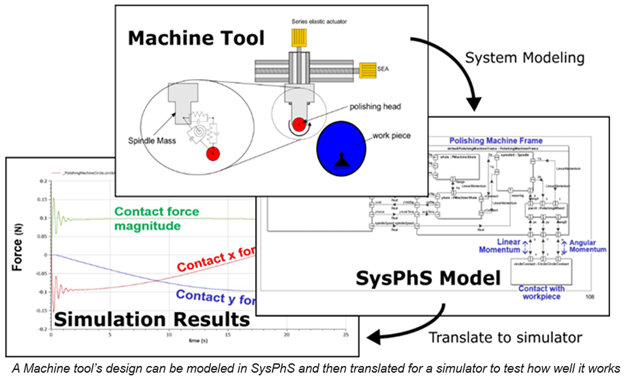
In a presentation to the standards development organization Object Management Group (OMG), NIST’s Charlie Manion and Conrad Bock proposed a way to expand the capabilities for modeling physical interaction in complex systems design and testing by extending OMG’s SysML Extension for Physical Interaction and Signal Flow Simulation (SysPhS) standard. SysPhyS augments OMG’s Systems Modeling Language (SysML) for one-dimensional simulation, which is widely used to design and test complex systems.
Bock reviewed NIST’s Systems Analysis Integration (SAI) project which increases the efficiency of engineering processes by integrating a variety of engineering analyses into SysML, as SysPhS does for one-dimensional simulation. Bock also outlined the basics of one-dimensional simulations and SysPhS’ limitations, notably having libraries only for electrical components.
Manion presented his development of new SysPhS component libraries, which aid modeling of mechanical systems and heat flow. These libraries include:
- Translational mechanics: Includes translational inertia, springs, and dampers
- Rotational mechanics: Defines the rotational analogs of the translational components above
- Heat transfer: Includes conduction, convection, and radiation
Manion also showed three examples of manufacturing system models using these libraries, including a weight compensating robot, 3D printer, and polishing machine. Manion demonstrated how these examples can be translated to OpenModelica and Simscape simulators, using a translator developed by NIST’s Raphael Barbau, producing similar results.

